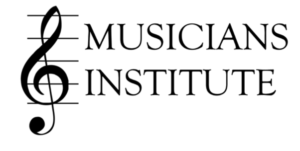
Part 3 – Working the Plan.
How to Listen, and What to Listen For
A couple of hypothetical rehearsal scenarios:
A. Director leads the group through each piece, beginning to end with no stops. For pieces where there were problems, the director says that they should work on it.
B. A group plays several measures of a piece. The sound is not very good – there seem to be mistakes. The director says ,”Let’s try that again”.
The measures are played again, sounding much the same as it did before. The director says that they should work on it.
Either of these scenarios fails to make sure the players have what they need to accurately play challenging music.
The director must know when there are musical problems, and they must know what they are and how to solve them.
There are 3 kinds of musical problems:
1. The director needs to fix it. There is some lack of understanding or skill.
2. The problem will get better on its own. There was just a minor or brief mistake that the player recognizes and can easily remedy.
3. The problem will not get better. The player does not currently have sufficient ability to play the given material.
Generally, you can recognize which kind of problem it is by its severity. Small mistakes are probably problems #2. More complicated mistakes are either problems #1 or #3. The more proficient the players and the ensemble, the fewer mistakes #1 and #3 you will hear. The more difficult the music, or the younger the players, the more likely you will have problems #1 and #3.
Productive rehearsals will focus on problems #1. Focusing on problems #2 or #3 will not improve anything and be frustrate your the players.
Back to our rehearsal scenario B. The director needs to know how the music is supposed to sound. Then compare what is played to how it should sound. You can tell there are mistakes if the sound is fuzzy, unclear, or sloppy.
Categories of Mistakes:
1. Key signature or accidentals mistakes. In any key, the last sharps or flats are the ones most commonly missed.
2. Rhythm mistakes. Obviously, the more complicated the rhythm, the more likely the mistakes in performing it. Also, rhythms which do not begin on the beat can be problematic – like on the & after the beat, or on the 2nd 16th note of the beat, etc.
3. Precision mistakes – players not moving together, not in the same tempo.
4. Style mistakes – some players playing short or separated notes, whole others play legato, smooth notes at the same time.
5. Volume/balance mistakes. Some players are too loud while others are not loud enough.
A good way to make it easier to hear where the mistakes are is to limit the number of people playing. Hear just the brass, or the flutes, or a smaller section by themselves. If you hear no mistakes, move on to someone else until you find it.
The next blog will focus on how to fix the problems you hear.

